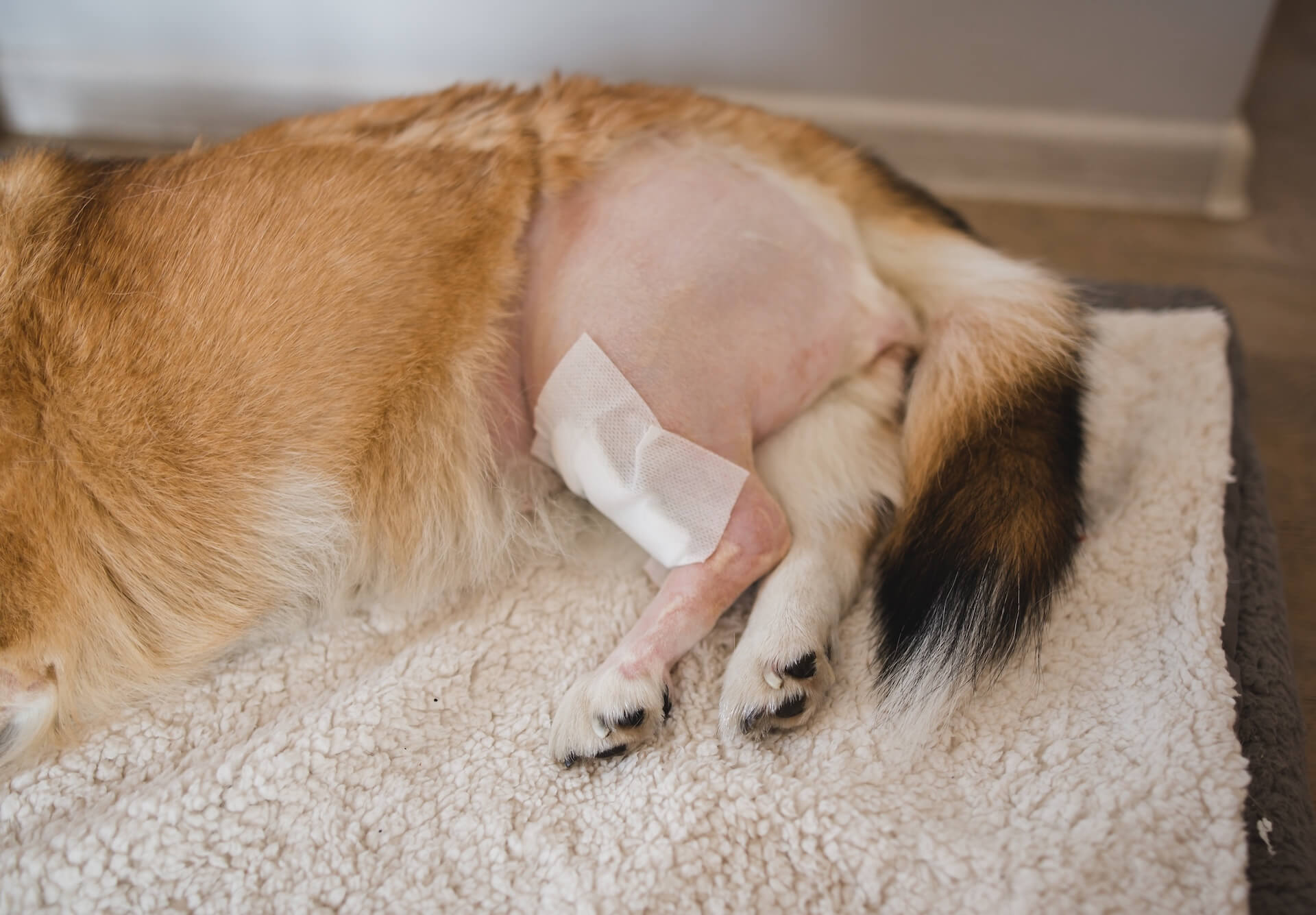
Depending on your pet’s individual situation, surgery might not be a first or realistic option. Here are some medical alternatives that may be right for you and your pet:
Cetyl-M: Cetyl myristoleate is a supplement recommended for the treatment of osteoarthritis and joint disease in dogs. It helps to relieve pain, increase range of motion and improve mobility. This product is highly recommended for the first month after a ligament injury to see if it will heal on its own. If still limping after a month generally surgery is necessary.
PRP: Platelet rich plasma uses a growth factors derived from your pet’s blood to enhance the body’s natural healing process. This is achieved by delivering a high concentration of growth and healing factors at an injured site. PRP is especially recommended if you cannot afford surgery, if your pet has a partial tear, or they already have arthritis in the joint.
Prolozone: This joint injection pairs ozone therapy and prolotherapy to initiate a healing cascade. This cascade then works by strengthening tendons and ligaments which reduces inflammation and relieves arthritic pain. Many times, this therapy is combined with PRP.
Braces: A custom brace made specifically for your pet that works to alleviate pain and lameness, offer support and maintain quality of life. These braces are generally ineffective for healing the joint, but may stabilize it enough to improve quality of life. May be recommended for old patient where surgery is ineffective.
Chronic management
In cases of chronic joint disease, your veterinarian will work with you to come up with a comprehensive plan to best manage your pet’s joint pain. This may include: a weight loss program, physical therapy exercises, swimming, a prescription joint diet, fish oil and other joint supplements, and pain medications. Cost varies depending on the required medications.
Stem Cell Therapy: Stem cell therapy is sometimes recommended for management of healing and chronic pain with joint disease.
Anti-inflammatories/NSAIDS: Though anti-inflammatory medications do play a part in managing pain, they are contraindicated in acute injuries as they may inhibit joint healing long term. Ask us about other pain medication options for your pet.
Surgical Options for Cruciate Disease:
Here are some surgical options to discuss with your veterinarian to see which might be the best option for you and your pet. Regardless of the surgical technique, approximately 60% of dogs will require surgery on the opposite (good) knee in the future:
Bilateral Extracapsular Stabilization Technique (BEST Technique): This technique uses suture to stabilize both sides of the knee joint. For larger dogs, multiple pieces of suture are used to aid in recovery. It aids in stabilization of the cruciate ligaments, collateral ligaments, and generally has a 95% return to normal function. This technique allows scar tissue to form over the suture stabilizing the joint long term. This technique will fail if your dog is too active and breaks the suture or if they are poor at forming scar tissue. Cost is approximately $2,500 dollars.
Lateral Suture, Extra-Capsular Repair: This technique uses suture to stabilize the knee joint. It aids in stabilization of the cruciate ligaments, and generally has a 95% return to normal function in small dogs. This technique allows scar tissue to form over the suture stabilizing the joint long term. This technique will fail if your dog is too active and breaks the suture or if they are poor at forming scar tissue. Cost is approximately $1,800-2,500 dollars.
Tightrope Implant: These extra-articular (outside the joint) procedures utilize suture material placed under the skin but just outside the knee joint to mimic the stability of an intact cruciate ligament. The Tightrope is a suture technique that involves tunnels to be drilled through the thigh and shin bones for more accurate anatomic placement of the suture/toggle implant. This procedure has less likely hood of the suture breaking than the BEST or the Lateral Suture. This technique has a slightly higher post-operative infection rate, and does not stabilize collateral ligament damage. Return to normal function is also 95%. Cost is approximately $1,800-2,500 dollars.
Tibial Plateau Leveling Osteotomy (TPLO Technique): This procedure involves making a circular cut into the top of the shin bone and rotating the contact surface of this bone until it is level at about 90 degrees to the patellar tendon. At this angle and orientation, the knee is relatively stable independent of the cruciate ligament. A plate and screws are used to stabilize the cut in the bone. Once the bone is healed, the bone plate and screws are no longer needed, but are seldom removed unless infection occurs. Return to normal function is approximately 95%. Complications can include fracture of the bone plate, bone infection, and non-union. Cost is approximately $4,500-6,000.
Tibial Tuberosity Advancement (TTA Technique): This procedure involves making a linear cut along the front of the shin bone and advancing it forward until the patellar tendon is oriented about 90 degrees to the top of the shin bone (tibial plateau). At this orientation, the knee is relatively stable independent of the cruciate ligament. Similar to the TPLO, the cut in the bone is stabilized with a bridging plate and screws. Though the bone plate and screws are not needed once the bone is healed, they are seldom removed unless infection occurs. Return to normal function is approximately 95%. Complications can include fracture of the bone plate, bone infection, and non-union. Cost is approximately $4,500-6,000.
